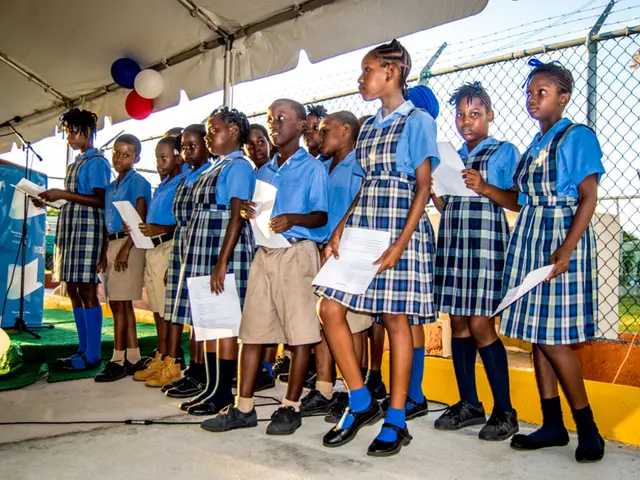Exhibitors push for equilibrium in an energetic display of wares (or goods) by students.
On a wet and dark Monday night, the energy surged in Kresge Auditorium as the highly anticipated celebration of student product designs unfolded, marking the end of a semester-long journey in MIT's famous class 2.009 (Product Engineering Processes). This exhilarating event drew crowds of spectators and thousands more online viewers, eager to see the culmination of students' hard work.
With the theme "Balance!" the event showcased six student teams' innovative product designs, business plans, and presentations that encapsulated creativity, technical rigor, and teamwork.
As Josh Wiesman, the lecturer of the course put it, "This semester, we've encouraged the teams to find the equilibrium between creativity and technical rigor on their journey through the product engineering process."
Striking the Balance
Dubbed "two-double-oh-nine" on campus, the course wrapped up the fall semester with a splash of color. Each team, named after a different color, was assigned mentors, access to makerspaces, and a budget of $7,500, transforming their ideas into real products. The experience not only emphasized creativity and product design but also honed their skills in teamwork.
The event was filled with demonstrations and videos reflecting this year's theme, from balancing acts to rides on scooters and skateboards. Professor Peko Hosoi, who co-instructed the course, shared, "Balance can symbolize stability, steadiness, symmetry, even fairness or impartiality. Tonight, we invite you to reflect on the concept of balance and celebrate the energy and creativity of each student and team."
Safety Meets Innovation
Among the diverse range of student-designed products, the Red Team showcased a respirator for wildland firefighters. Designed to fit comfortably on a user's face, the device includes a battery-powered air filter and a valve for exhalations. The system, currently priced at $40 to manufacture, is intended to provide effective respiratory protection for firefighters in the field. The team plans to license the product to manufacturers, who can then sell it directly to fire departments and governments.
Another innovative solution comes from the Purple Team with Contact, a crash detection system aimed at increasing safety for young cyclists. By using a combination of hardware and smart algorithms, the compact device can detect accidents, alert parents or guardians, and even assess the severity of injuries.
A Focus on Rehabilitation and Ergonomics
The Yellow Team presented a knee rehabilitation device that utilizes real-time workout monitoring and feedback. By continuously processing data through a mobile app and sharing it with physical therapists, the product aims to offer personalized guidance that expedites patients' recovery from post-surgery procedures or knee-related injuries.
Meanwhile, the Blue Team unveiled Band-It, an ergonomic tool designed to address the high prevalence of wrist pain among lobstermen in North America. The Band-It is projected to retail at $50, with a manufacturing cost of $10.50, and includes a licensing model with 10% royalties and a $5,000 base licensing fee.
Innovations for the Deep Blue Sea
Some product designs targeted solutions for the marine environment. The Pink Team's MARLIN (Marine Augmented Reality Lens Imaging Network) system enhances underwater vision by integrating into diving masks and creating a 3D-like view, making it easier for divers to see in murky or cloudy water conditions. The device hinges for easy removal from the mask and processes video feeds in real-time.
Lastly, the Green Team debuted Neptune, an underwater communication system designed for beginner scuba divers. The compact device features pre-programmed communications like "Ascend," "Marine Life," and "SOS" and runs for six hours on a single battery charge. The system operates underwater up to 50 meters deep and can be found in dive shops in packs of two for $800, with plans to rent the devices for $15 per dive.
Product Engineers of Tomorrow
As the night went on, spectators cheered and waved pompoms while teams demonstrated their prototypes and sharedbusiness plans. From elaborate props and videos to compelling stories, the presentations were filled with passion and excitement. The course instructors thanked everyone who contributed to the show's production and commended the students for embracing the demanding and often chaotic project, all while working towards that elusive balance.
"In just 13 weeks, our students have embarked on an incredible journey, starting with ideation and brainstorming to determine challenges and opportunities," said Hosoi, "and ultimately transforming into the product engineers of tomorrow."
- The student teams, each named after a different color, worked tirelessly in MIT's Kresge Auditorium, utilizing mentors, makerspaces, and a budget of $7,500 to turn their ideas into real products.
- The Red Team presented a respirator for wildland firefighters, designed to provide effective respiratory protection and currently priced at $40 to manufacture.
- The Purple Team's Contact system is a crash detection device aimed at increasing safety for young cyclists, using a combination of hardware and smart algorithms.
- The Yellow Team's knee rehabilitation device offers personalized guidance through continuous data processing and feedback, helping patients recover from post-surgery procedures or injuries.
- The Pink Team's MARLIN system enhances underwater vision for divers, making it easier to see in murky or cloudy water conditions.
- The Green Team introduced Neptune, an underwater communication system for beginner scuba divers, featuring pre-programmed communications and a retail price of $800. Inspiring product engineers of tomorrow, these students learned valuable lessons in creativity, technical rigor, and teamwork throughout the semester.








